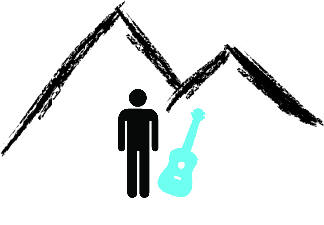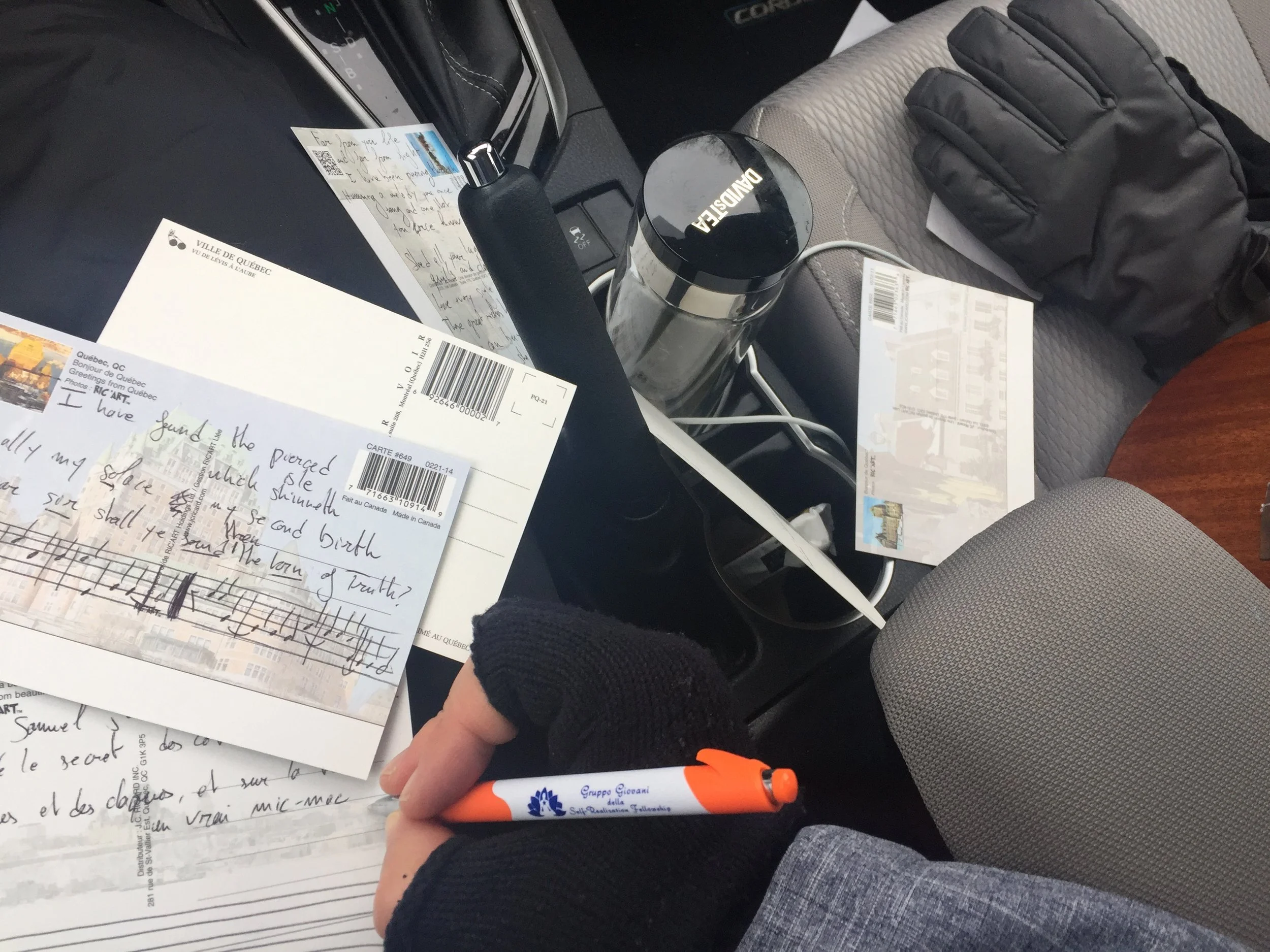We humans are a funny bunch. For many reasons, but one in particular was distracting me as I was making my way from Percé to Gaspé, on the Eastern shores of the Gaspésie Peninsula.
A mode of transport to go with the grey #GoingNorth Road Trip
You may have noticed this yourself, we think ahead a lot, and we think backwards quite a bit too. Worrying about the future, or dwelling on what was. And, the 'moment', 'l'instant', eludes us. Thinking is great, but when it is taking your mind off the grey and majestic landscapes of Gaspésie, it's a pain in the ... brain.
Some light snow to add to the beauty of the very Eastern shore of Gaspesia
Set the scene. Everything is grey and beautiful (very much like this particular Ukulele Road Trip. It's grey too anyway). A couple drives through this inspiring picture, more concerned about the holiday photo-album than the feeling of freedom the landscape quietly offers.
On tourne un peu en rond, tout se mélange et confond, peut-être qu'en fait au fond, on ne sait pas ce qui compte. On poursuit l'aujourd'hui, tout le long de la Gaspésie, et s'il s'était enfui, cet aujourd'hui ?
Going round in circles slighlty, everything does become a blur, maybe in truth, we know not what does matter. We search for today, all along Gaspesia, what if it had run away, this elusive today ?
Allez, viens avec moi, ne cherchons pas de quoi remplir en rentrant, des albums dans les tiroirs, mourants! Allez, viens avec moi, savourons ensemble et chacun dans la brume du Saint Laurent, l'instant.
Hark, come with me, let us not search what to bring back, and have it wither and die in a draw back home. Hark, come with me, let us delight together, and each one of us, in the mist of the Saint Laurent, in the moment.
by the way, take a brief moment to share this song and drop a comment/clickedilike - or this page will stay like the background of the song in Gaspesia: deserted
À GASPÉ
In the video, behind the man with the little guitar and just before the beautiful rounded low mountains in the background, lies the town of Gaspé. Or Gespeg if you're an indigenous Mi'kmaq. Which, let's face it, you probably aren't.
The town of Gaspé is the setting for the fanciest museum you'll find in these parts: the 'Musée de la Gaspésie'.
In English, this roughly translates as "Museum of Gaspesia" (although subtleties of language make a literal translation tricky)
I arrived by chance during the seasonal in-door hand-made market. You couldn't wish for a better view whilst shopping for mugs and handmade stained glass. I'm travelling on a budget so I had a traditional Gaspesian... er, coffee.
Things you may learn in this museum include what a traditional native tipi looks like. It looks a bit like the ones set up as decorative memorials on the banks of the modern city.
But you may also learn about the locals and their struggles, that had been having a relaxing time walking around freely for 9000 years, until the Europeans turned up.
LES MI'KMAQ ET LES ACADIENS
The coast of Gaspesia where I am now, is a very important historical place for the country as a whole. It is where the Europeans first set foot, and first started to build settlements. The story of it all isn't exactly natives vs. Europeans, though. It's a bit more interesting than that.
There were two main groups of native Americans in the region, the Mi'kmaq, which we've mentioned before, and the Acadiens; who sound a bit like badies in a Doctor Who episode. The Mi'kmaq are more the hunting type, connected with the land and nomadic in their lifestyle. The Acadiens on the other hand were leaning more towards farming and livestock. Whenever a war broke out in the XVIIIth Century between the British and the French (who live right next to each other in Europe by the way, but would rather fight not too close to home), the Mi'kmaq sided with their friends the French, whereas the Acadiens tended to side with the British.
The Mi'Kmaq didn't much like the British and always struggled to accept their occupation, when the peninsula was under their control. So much so that when the friendly French captured British soldiers, the French had to give them special surveillance, even sometimes keep them on their ships, so that the Mi'Kmaq would not go ahead and "sacrifice" them. Too much zeal is sometimes not the way.
Unfortunately, in 1760, the French lost, left for good, and more and more of the Mi'kmaq lands were given to the Acadiens. The Acadiens kept complaining the Mi'Kmaq were not good at planning enough, depending on "nature" and "wild fruits" and "hunting" and other crazy things no one who enjoys a good Starbucks would ever give a second thought for. Things were said. Feelings were hurt. This created a lot of tension, and a loss of Mi'Kmaq hunting and fishing territories. Luckily, the British had a great answer to these issues after a while: they simply took away the rights, and most of the lands, of both the Acadiens, and of the Mi'kmaq. Problem solved. A bit like harsh parenting, but, one that destroys identity and violates indigenous rights.
Do I have a song about this? No. But if I don't mention it here, I'm not sure I ever will.
And thanks for the magazine on Mi'Kmaq history, girl who works at the museum and with whom I had a chat about Gaspesia during my coffee !
Thanks for reading ! And viewing! And having made it all the way down here!
If you think this odd website of this Backpacking French Ukulele guy is a good thing to have in the world, you can support the project via this Patreon page. If you don't think it's a good thing, obviously, don't do it.
The nice people at Cloud Music Ukuleles are making these "Moments" and "les instants" of the #GoingNorth adventure possible. Have a moment on their website for some ukulele-(window)-shopping.



























